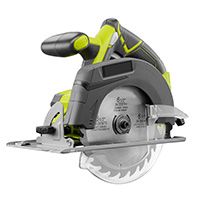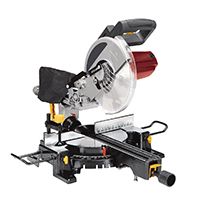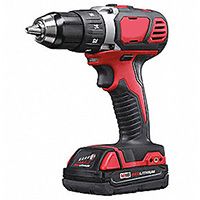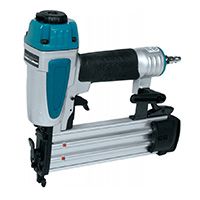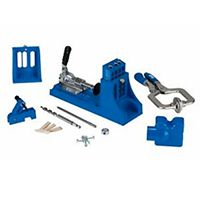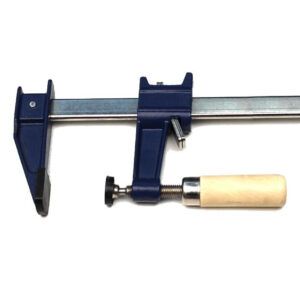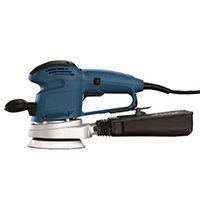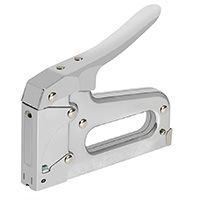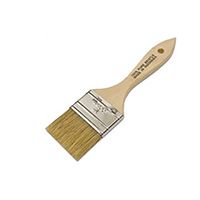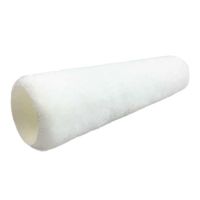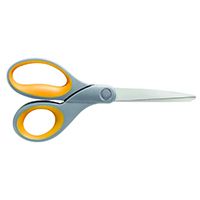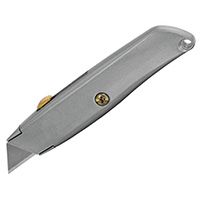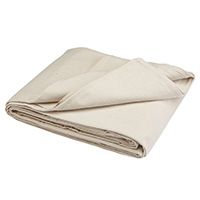This article appeared in the Fall 2021 issue of This Old House Magazine.
A console cabinet is a great way to add style and function to your space, serving as a place to store things like shoes or stemware and display decorative items. In the video above, do-it-yourself (DIY) expert Jenn Largesse demonstrates how to build one yourself for about half the cost of store-bought options.
Console Cabinet Materials and Tools
Before starting your project, gather the following materials:
- 3/4-inch plywood panel (4 feet by 8 feet)
- Five 1-by-2 boards (8 feet long)
- 1/8-inch hardboard panel (4 feet by 8 feet)
- Three edge-style cabinet pulls
- Two 3-inch no-mortise hinges
- Four 12-inch drawer slides
- 1 1/4-inch wood screws
- 1 1/4-inch pocket-hole screws
- 3/4-inch brad nails
- 1/2-inch open-mesh cane (18 feet wide by 4 feet long)
- 3/8-inch staples
- Edge-veneer tape (25 feet)
- Matte black paint-and-primer
- Tack cloth
- Wood glue
You’ll need these tools for the project:
- Bar clamps
- Circular saw
- Drill/driver
- Hand stapler
- Miter saw
- Orbital sander
- Paintbrush and foam roller
- Pneumatic brad nailer
- Pocket-hole jig
- Scissors
- Utility knife
Console Cabinet Cut List
- 3/4-inch plywood top: one at 45 inches wide and 14 1/2 inches deep
- 3/4-inch plywood side panel: two at 12 inches deep by 26 3/4 inches high
- 3/4-inch plywood base: one at 12 inches deep by 39 inches wide
- 3/4-inch plywood center wall: one at 12 inches deep by 24 1/2 inches high
- 3/4-inch plywood drawer supports: two at 3 3/4 inches deep by 19 1/2 inches wide
- 3/4-inch plywood top supports: two at 4 inches deep by 39 inches wide
- 3/4-inch plywood drawer sides: four at 12 inches deep by 10 inches high
- 3/4-inch plywood drawer base: two at 12 inches deep by 17 inches wide
- 3/4-inch plywood drawer back: two at 9 1/4 inches high by 17 inches wide
- 1-by-2 legs: four at 29 3/4 inches
- 1-by-2 sidewall trim: four at 12 inches
- 1-by-2 front trim: one at 39 inches
- 1-by-2 door frame rails: two at 16 1/4 inches
- 1-by-2 door frame stiles: two at 25 inches
- 1-by-2 drawer frame rails: four at 16 1/4 inches
- 1-by-2 drawer frame stiles: four at 12 1/2 inches
- 1/8-inch hardboard panel: one at 26 inches high by 39 inches wide
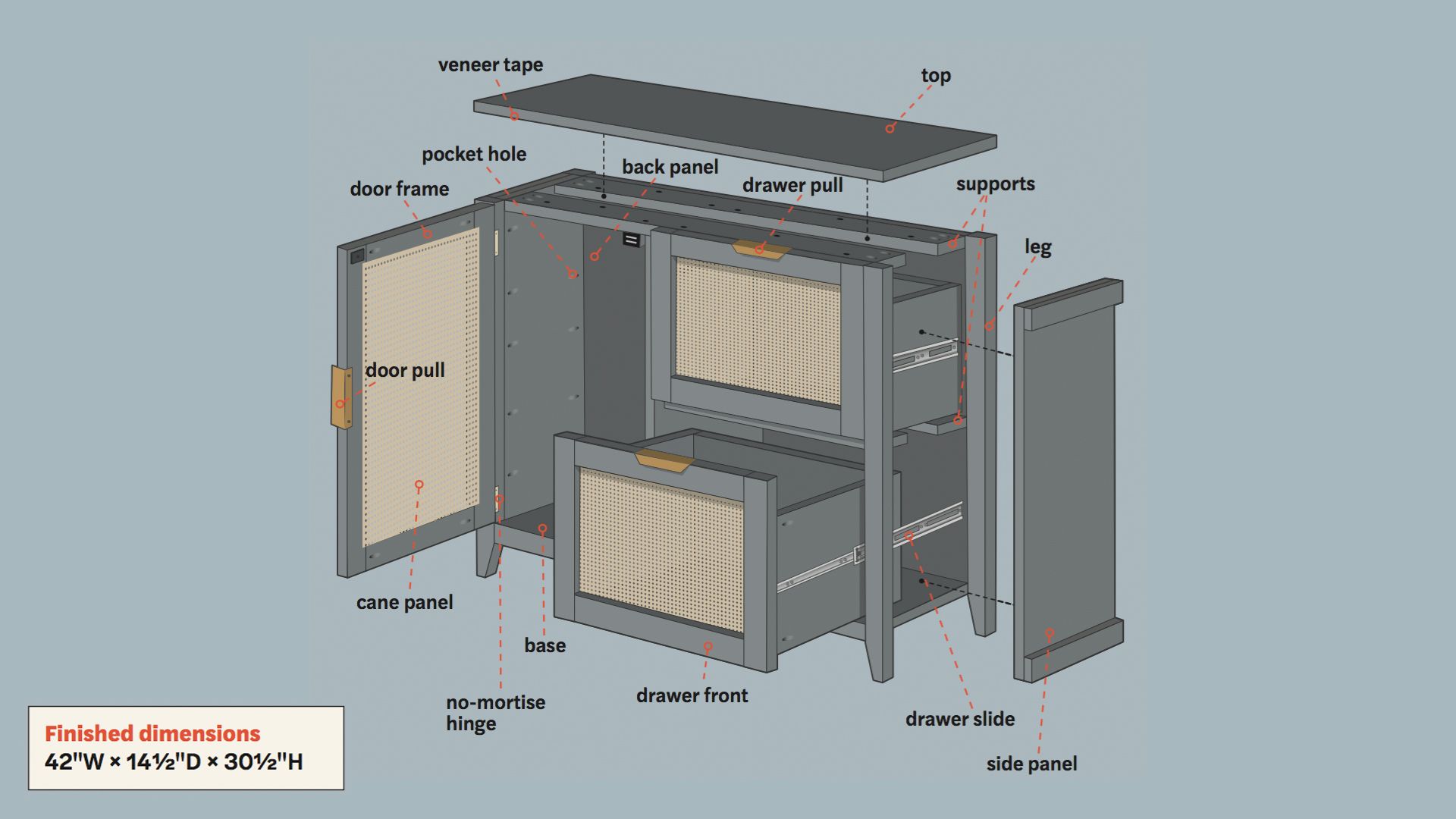
What To Know About Working with Cane for Your Console Cabinet
For the frames of the door and drawer fronts, Largesse chose a woven, open-mesh cane with holes spaced half an inch on center. The sheets sold in most crafts stores are too small to cover the cabinet’s door and drawers, so she ordered a roll online, making sure it could cover the full width of each opening, and overhang all sides by at least an inch.
Tip: Soak the cane panels in lukewarm water for 30 minutes before stapling them in place. As the fibers dry, they shrink to a tight fit.
Step 1: Prep the Console Cabinet Parts
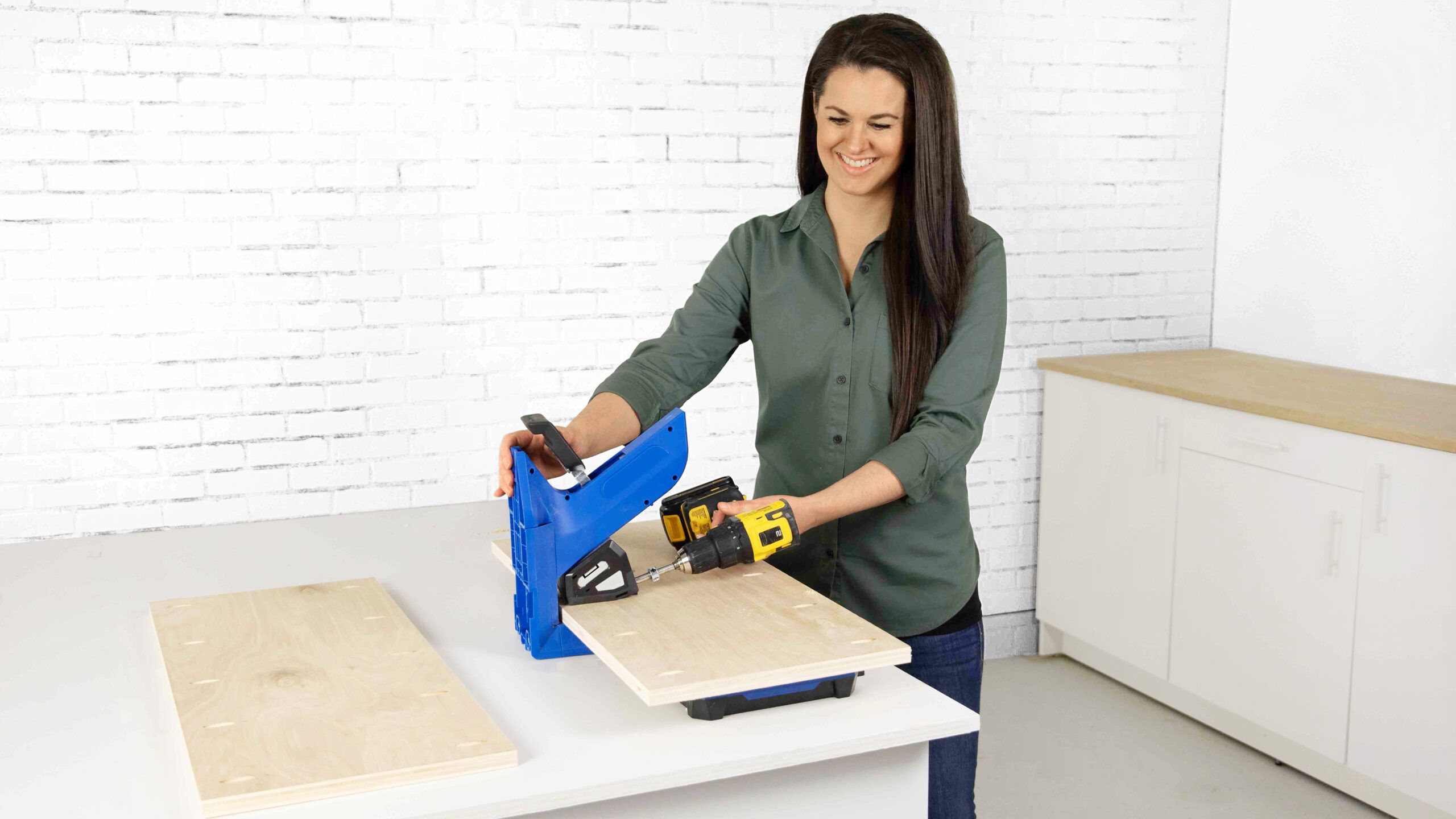
Using the cut list, have the home center break down a 4-by-8-foot sheet of plywood. At home, cut the plywood and 1-by-2s to length on a miter saw. Use a circular saw to rip the top and supports to width and to taper the bottom 3 inches of each leg. Then use a pocket-hole jig (above) to drill through-edge holes where needed.
Step 2: Assemble the Console Cabinet Sides
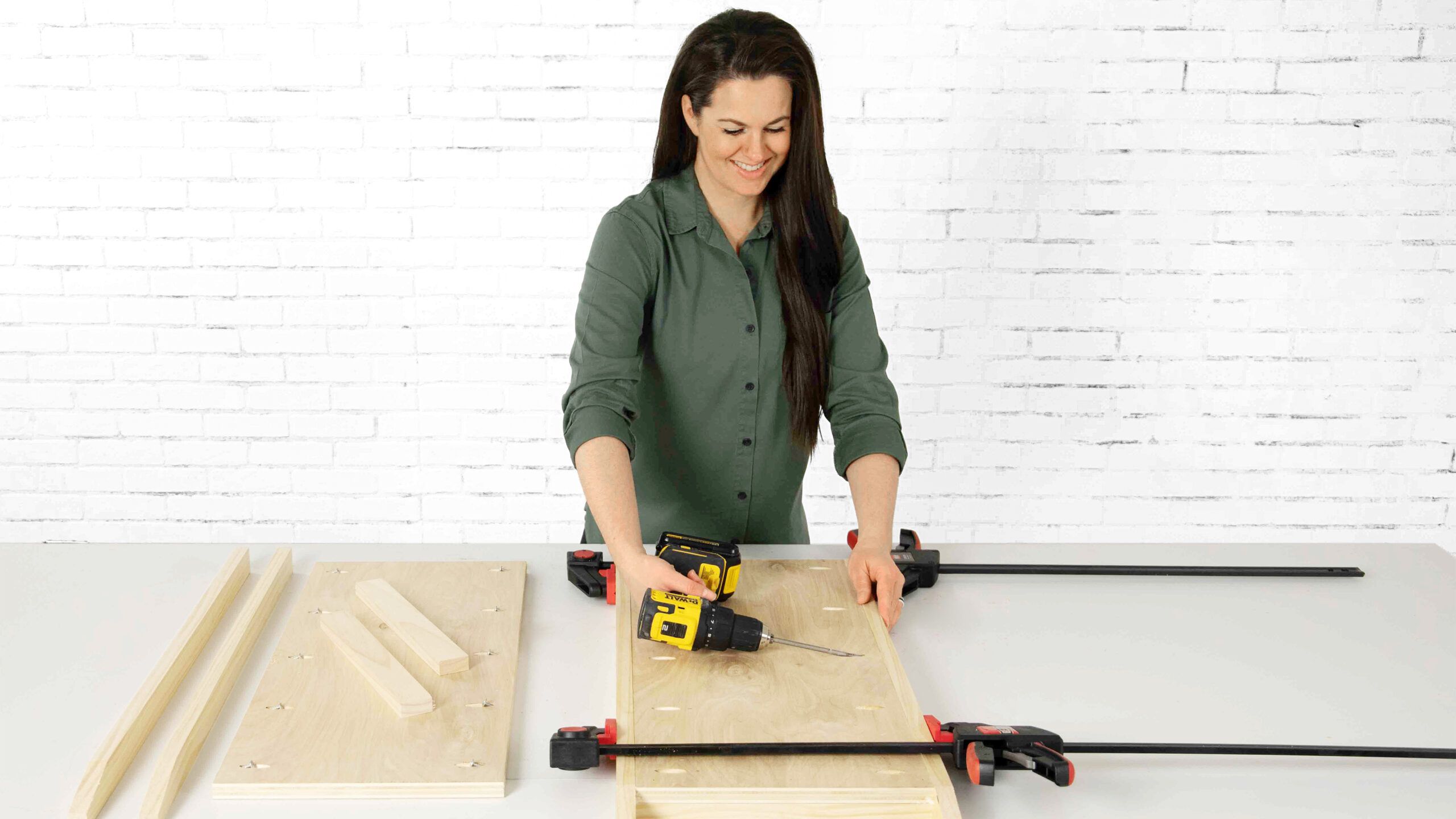
Glue and clamp 1-by-2 Legs to the plywood sides, then secure them with pocket-hole screws, as shown. Run glue along the back of the 1-by-2 trim. Turn the sides over and glue the trim between the legs, flush with the sides, top and bottom. Flip the sides over and shoot nails through the plywood and into the trim to secure it in place.
Step 3: Attach the Console Cabinet Base
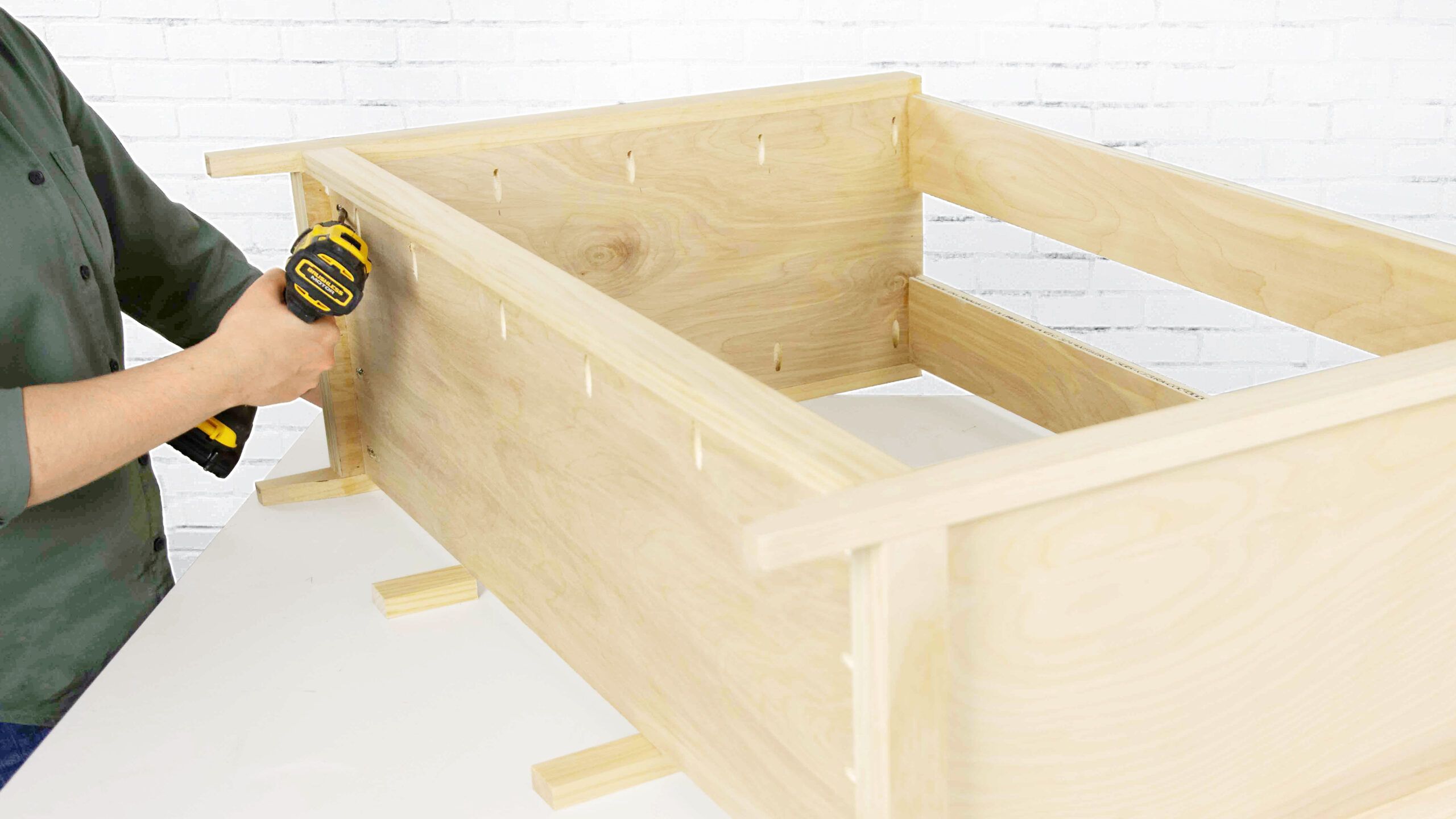
Glue the 1-by-2 trim to the front edge of the base so the trim’s top edge is flush with the base. Drive pocket-hole screws through the base to secure the trim. Now mark a line on the inside of the sidewalls 1 1/2 inches from their bottom edges. Attach the base assembly to the sidewalls below these lines using glue and pocket-hole screws, as shown.
Step 4: Install Cabinet Drawer Supports
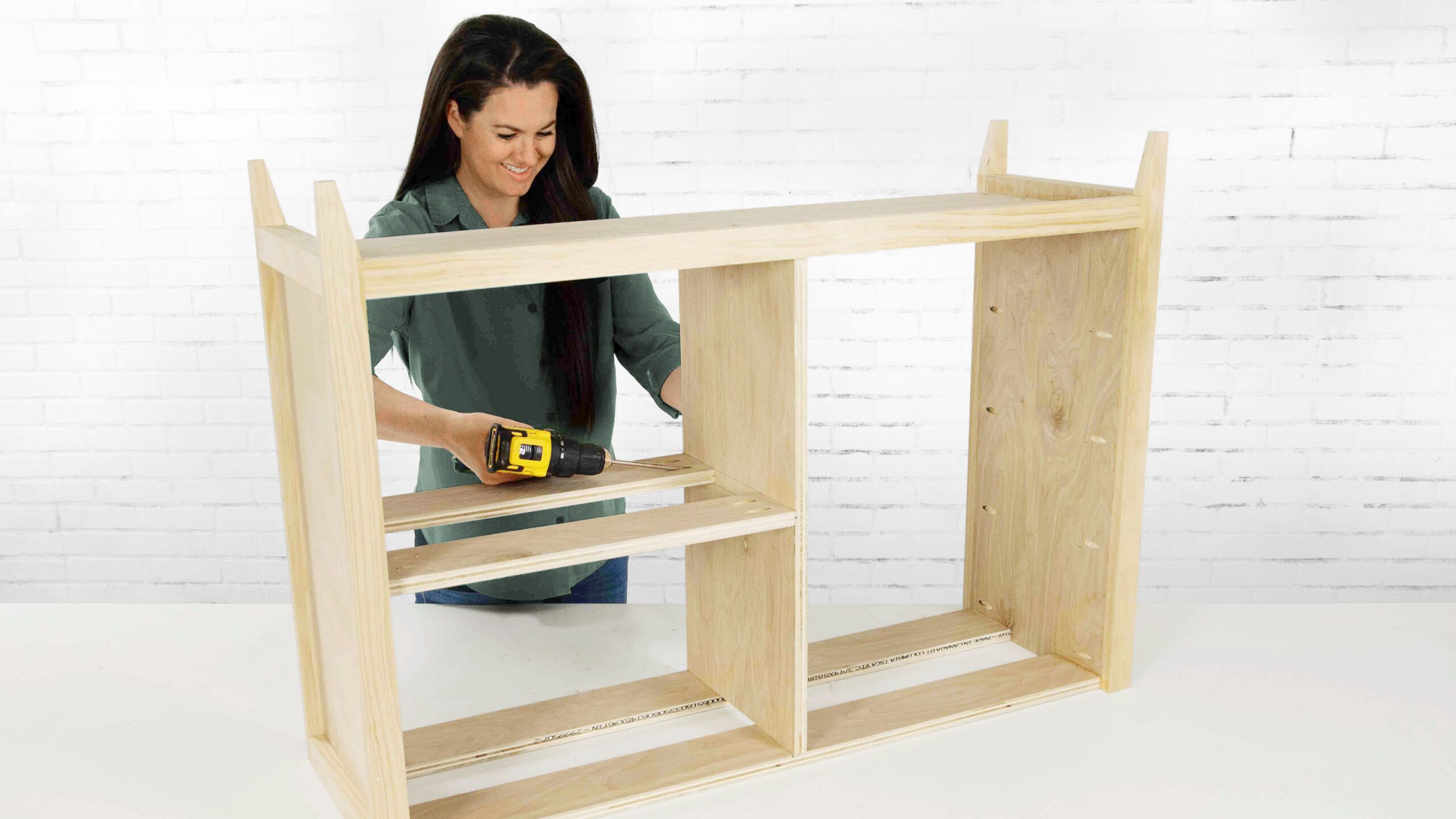
Fit them between the sides, flush with their front and back edges. Set the top pair flush with the sides’ top edges. Glue and pocket-screw each joint. Mark a centerline, front to back, across the supports. Set an upright divider on the line’s left side, and drive wood screws into it through the supports and base. Fasten the middle supports, as shown.
Step 5: Attach the Console Cabinet Top
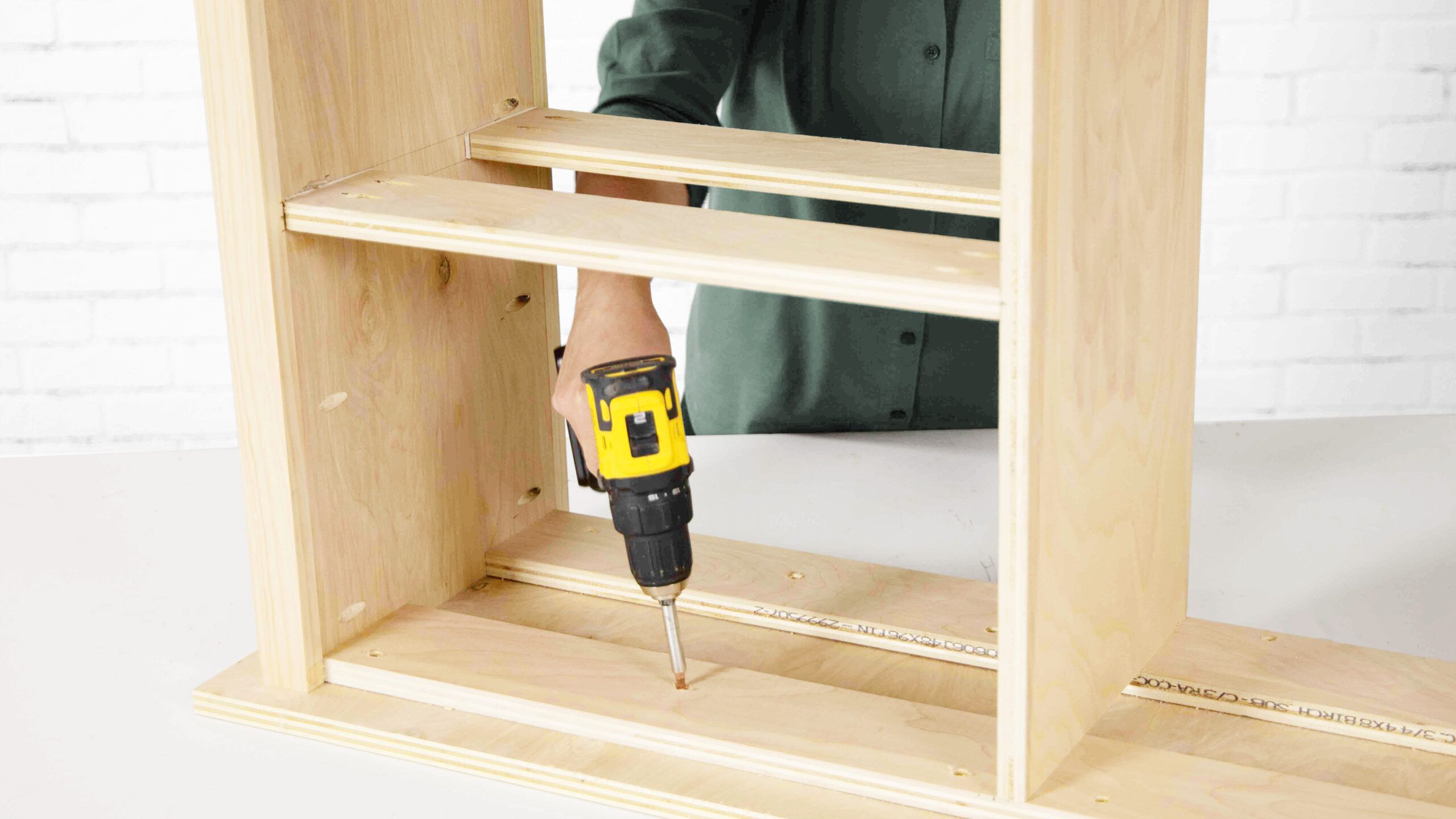
With the top upside down on the work surface, position the base assembly on it, flush with its back edge and centered along its width. Drill 1-inch-deep pilot holes through the supports and into the top (for a depth guide, wrap tape around the drill bit). Drive wood screws through the holes in the supports and into the top’s underside.
Step 6: Assemble the Cabinet Door and Drawer-Front Frames
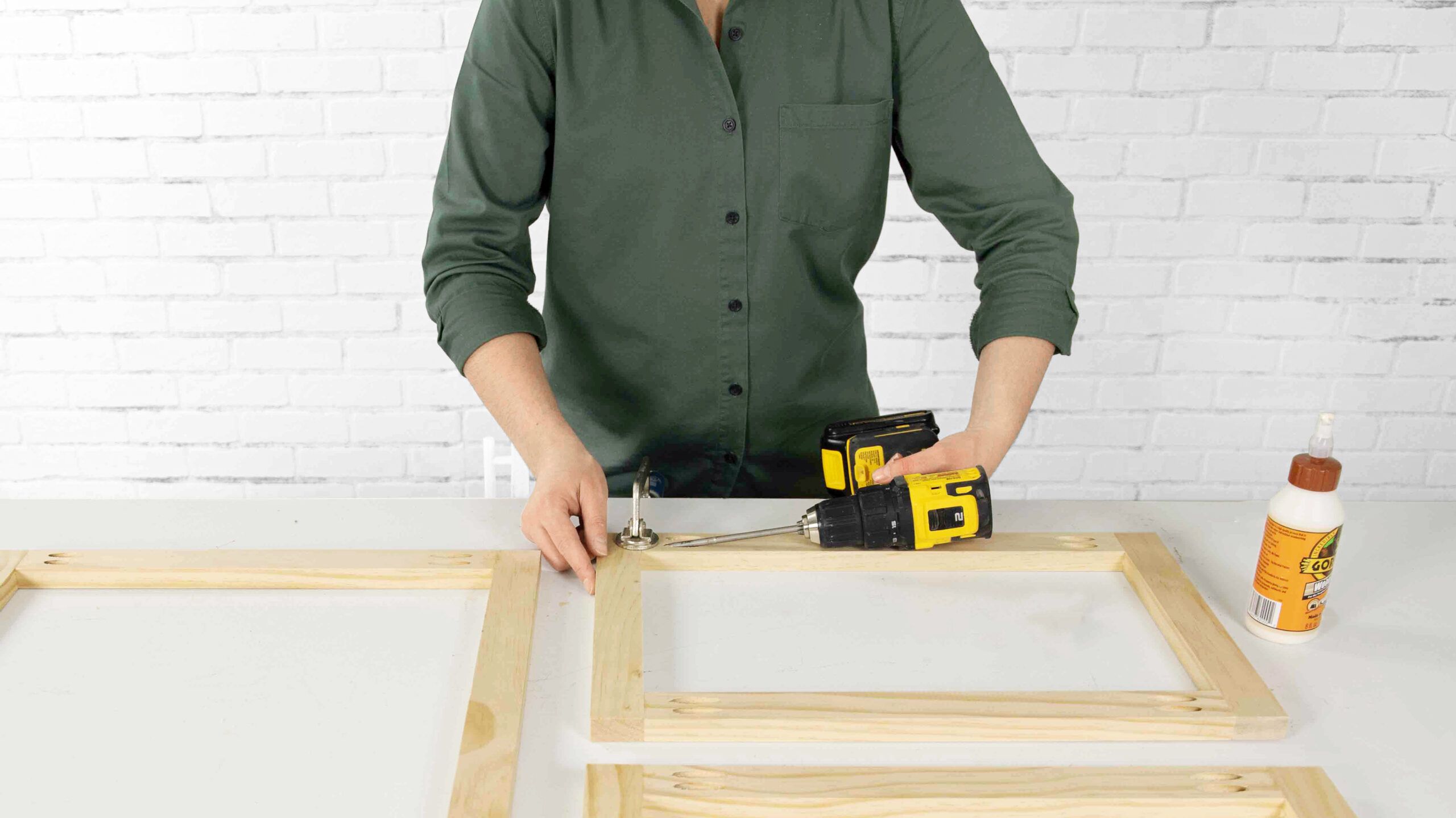
Drill two pocket holes at the end of each 1-by-2 rail. Apply glue to the ends of the door rails, position them between the stiles, then clamp each joint to hold the faces flush while driving a pocket-hole screw into each hole, as shown. Do the same for both drawer-front frames.
Step 7: Build the Console Cabinet Drawers

Use a circular saw to cut the drawer pieces. Drill pocket holes through the front and side edges of the base, the bottom and side edges of the back, and the front edge of the drawer’s sides. Glue and pocket-hole screw the back and base between the sides, as shown.
Step 8: Paint the Console Cabinet
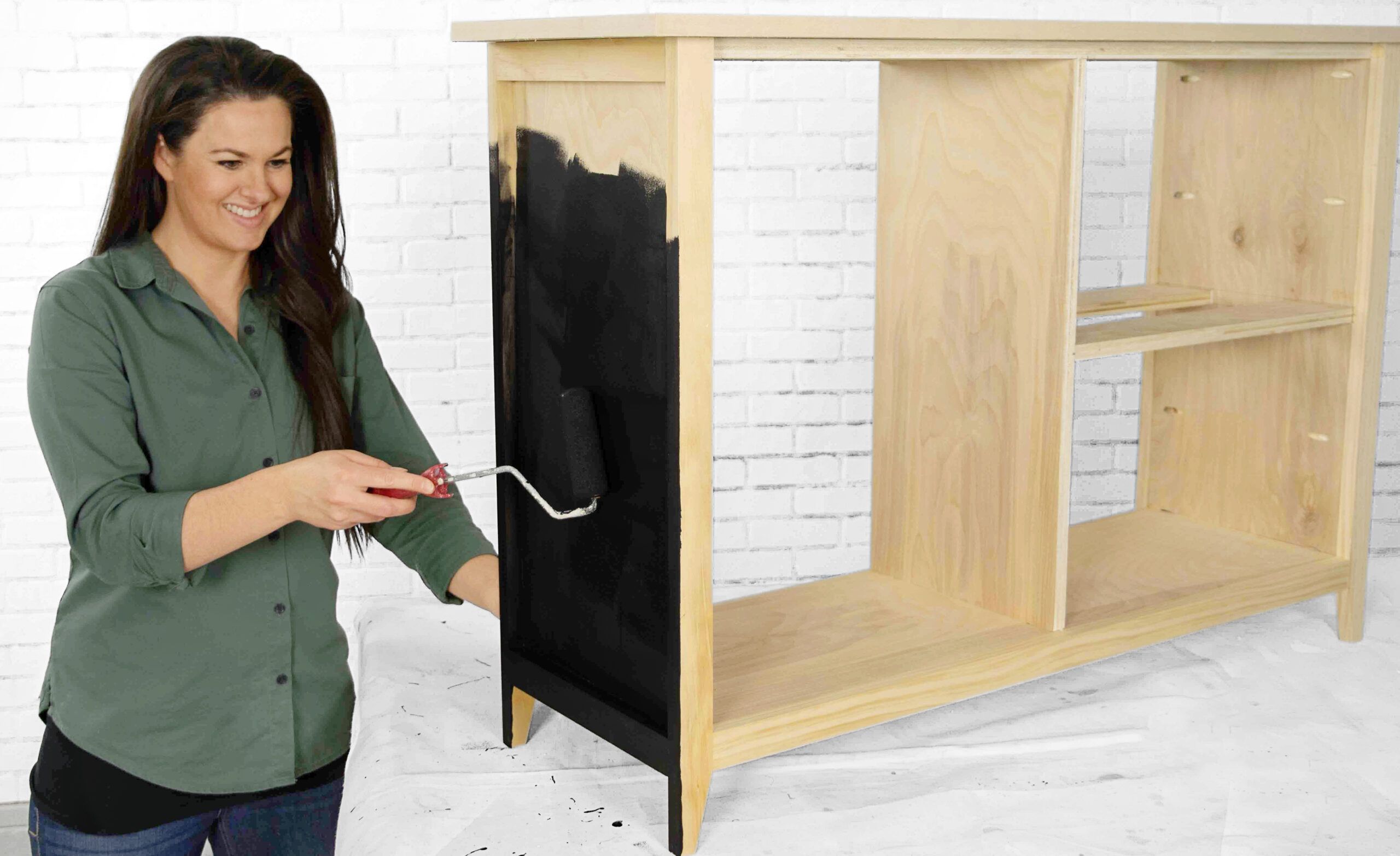
Hide the exposed plywood edges with iron-on, edge-veneer tape, then trim it flush with a utility knife. Sand the wood surfaces with an orbital sander, then wipe away the sawdust with a tack cloth. Using a foam roller and paintbrush, apply two coats of paint to every surface you can reach, including the drawer fronts, door frame, and back panel.
Step 9: Attach the Cane Panels to the Console Cabinet
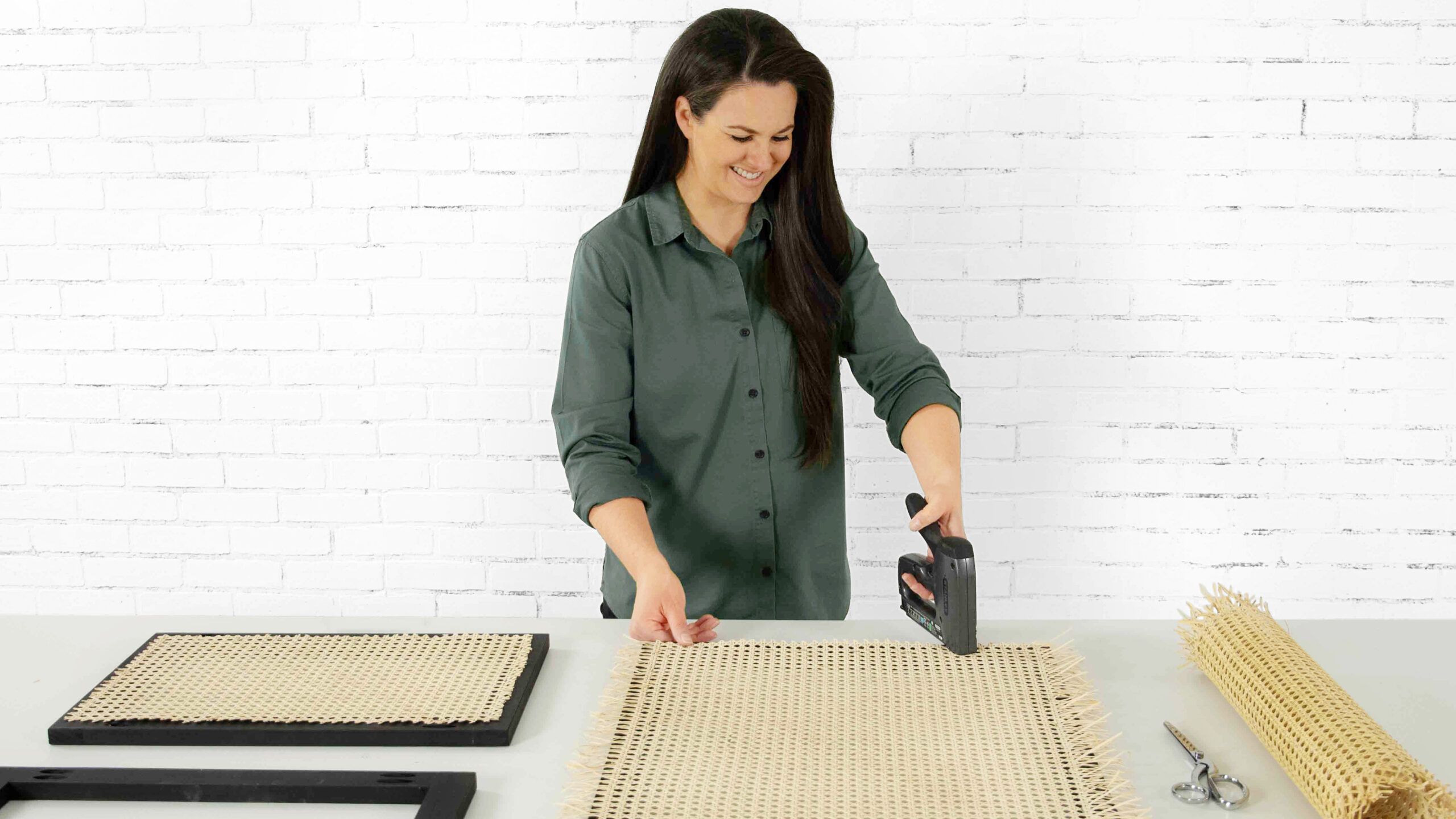
Soak the cane for 30 minutes in warm water, then cut it to size with scissors so it’s about an inch longer than the door opening’s height and width. Do the same for the drawer panels; leave each one 18 inches wide. Center the cane, then secure its edges to the back of each frame with staples. Trim the excess with a utility knife and let it dry.
Step 10: Install the Cabinet Doors
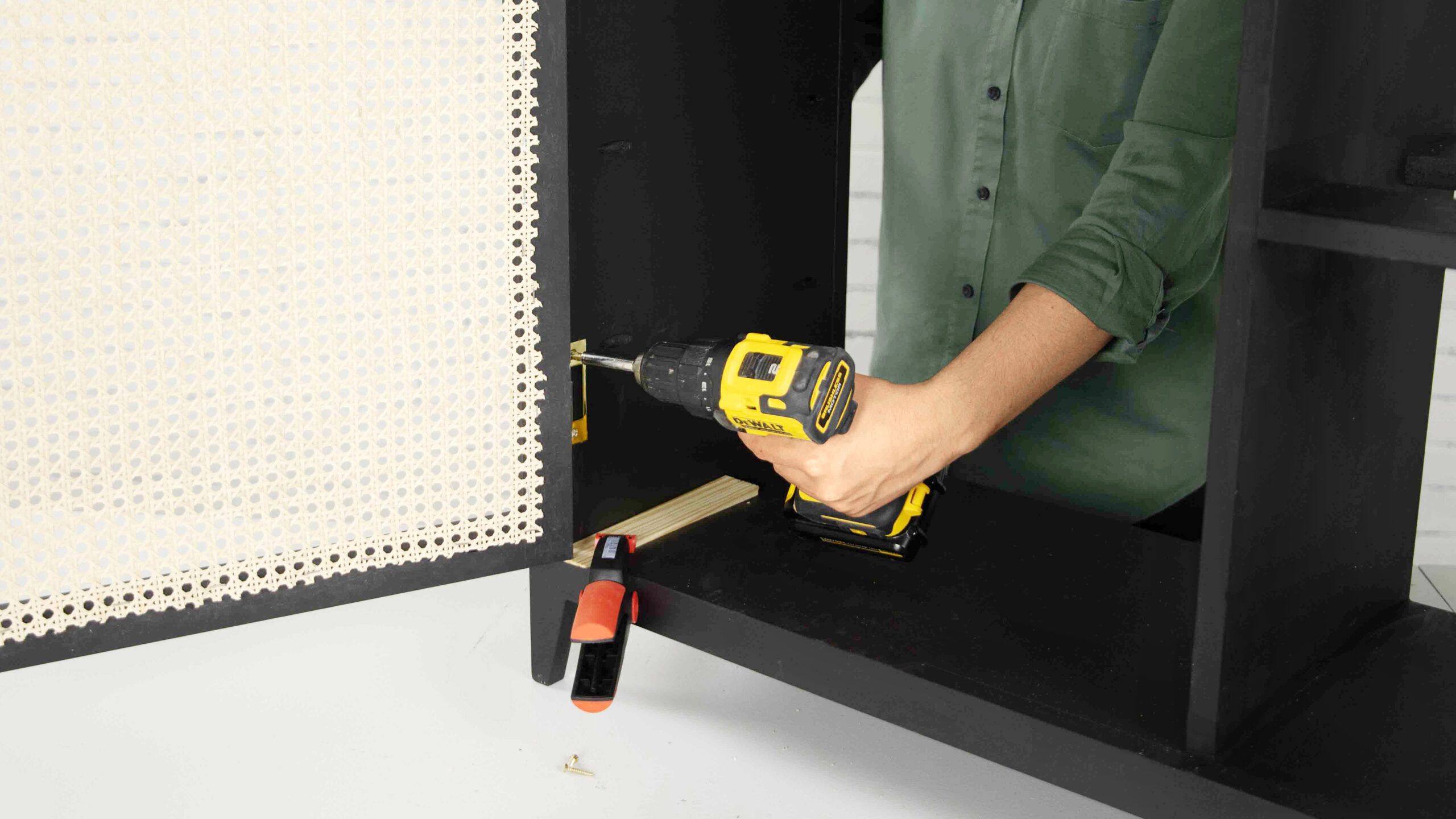
Place no-mortise hinge leaves on the edge of the door frame. Drill pilot holes through the hinge holes into the door edge, followed by screws. On the door’s right front edge, center and install a pull. Fit the door inside the opening, and level it using a shim, as shown. Drive screws through the remaining hinge-leaf holes and into the front legs.
Step 11: Install the Cabinet Drawers

Screw a pull to each drawer front’s top edge. Separate the slides, then screw their inner halves, centered vertically and flush with the front, to the sides of both drawers. Rejoin the slides. Set the drawers in their openings on 3/4-inch blocks. Pull them open slightly to reveal the slide holes, and screw them to the sides. Fasten the drawer fronts to their boxes.
Step 12: Attach the Console Cabinet Back Panel

Position the panel against the back edge of the top support and the back edge of the base. Slide it down and mark the location of the center wall, and to the side to mark the location of the horizontal support. Move the panel back into position and nail it to the supports, the center wall, and the base using a brad nailer and 3/4-inch nails.
